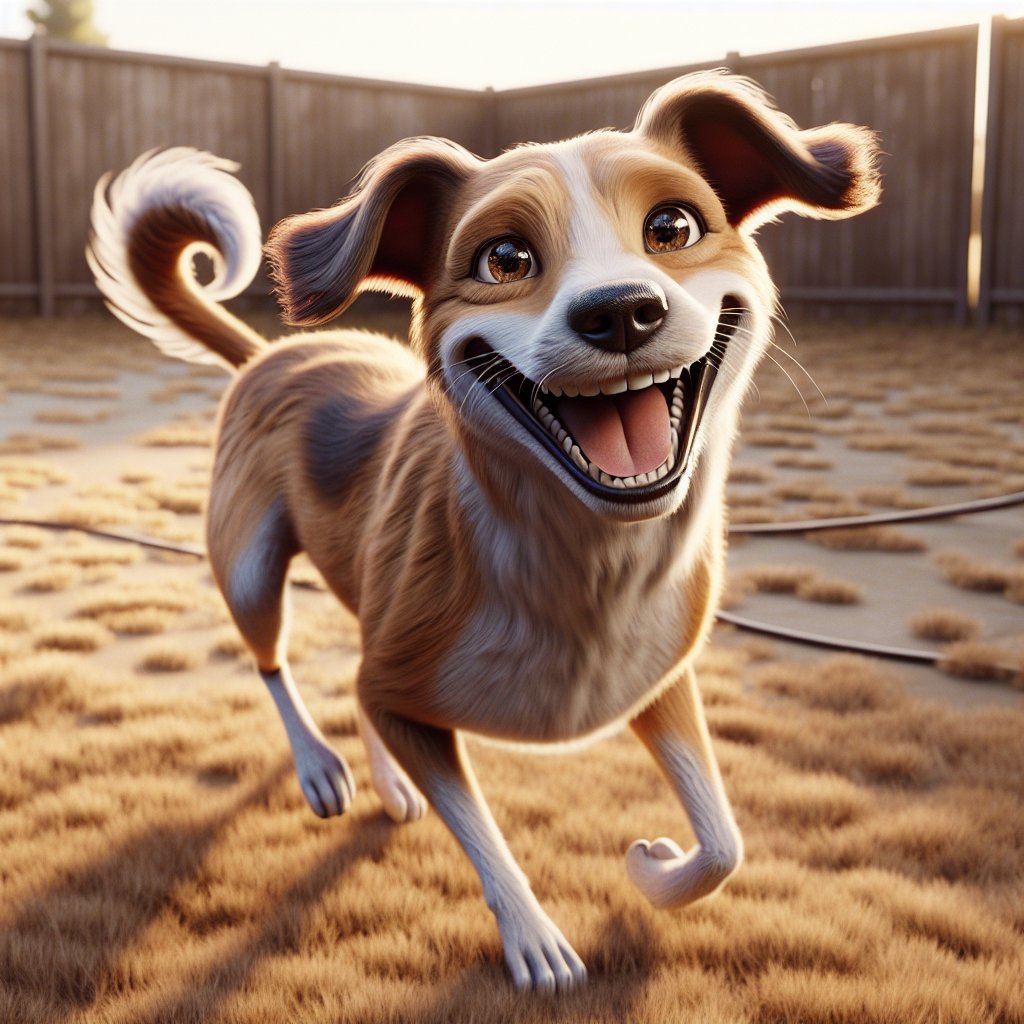Introduction to Flea Multiplication

Alright, folks, let’s dive into the curious world of fleas. You know, those little pests that make your dog scratch like it’s got the itch of a lifetime. So, how do fleas multiply? Well, they do it with a kind of efficiency that would make a rabbit blush. Fleas have got this down to an art form. They’re like nature’s tiny survivalists, with a game plan that’s pretty much foolproof.
When you think about fleas, think “go big or go home.” These critters are all about numbers. A single flea can lay around 20 eggs a day. Do the math, and you’ll realize it doesn’t take long before you’re dealing with an army. It’s like a flea flash mob, and trust me, you don’t want to be the host.
The Flea’s Life Cycle Explained
Alright, gather ’round. We’re gonna talk about flea life cycle stages. First, you’ve got the egg stage. Fleas lay these little guys all over the place, and they’re like tiny white specks. You might think they’re harmless, but they’re just biding their time.
Next up, the larvae stage. These are the worm-like dudes that squirm around in your carpet, munching on whatever organic matter they can find. They’re not picky eaters, that’s for sure. After that, they cocoon themselves into pupae — the teenage phase, if you will. Finally, they emerge as adults, fully ready to start the whole flea reproduction cycle over again.
And this whole flea life cycle? It can be as short as two weeks or stretch out to a few months, depending on the conditions. Crazy, right? They’re like the ninjas of the insect world, moving fast and keeping you on your toes.
Why Fleas Reproduce So Quickly
Now, you might be wondering, why do fleas reproduce so quickly? Well, it’s simple. They’re built for speed. Like I said, a single flea can lay a bunch of eggs every day. But it’s not just the number of eggs — it’s the conditions they thrive in. Fleas love warm, humid environments. You know, like your cozy living room in summer.
These guys are opportunists. The moment they sense warmth and vibration — like when your dog walks by — they’re ready to jump on for a blood meal. That’s right, a blood meal. Sounds like a horror movie, doesn’t it? But hey, it’s just nature doing its thing.
Where Do Fleas Lay Their Eggs?
Alright, here’s a fun fact for you. Fleas aren’t exactly picky about where they lay their eggs. You’d think they’d have a preference, but nope. They’ll lay their eggs wherever they can — in your pet’s fur, in the carpet, in the cracks of your floorboards. It’s like they’re playing hide and seek. And they’re the champs.
Understanding flea egg laying habits is key if you wanna tackle these pests. You’ve gotta look in all the nooks and crannies because that’s where the magic — or chaos, depending on how you see it — happens.
Optimal Conditions for Flea Reproduction
Now, let’s talk about what makes fleas tick, or rather, what makes them breed like there’s no tomorrow. Flea breeding conditions are all about warmth and moisture. If you’ve got a humid summer day, that’s the perfect flea party.
Fleas are not fans of the cold. So, if you’re dealing with a flea problem, one piece of advice is to keep things cool and dry. Easier said than done, I know. But hey, we’re just observing here, not solving world problems.
And there you have it — a peek into the world of flea multiplication. It’s not glamorous, but it’s fascinating in a weird, itchy way. Thanks for sticking around. I hope you found this dive into the flea universe somewhat enlightening. Keep an eye on those pets and remember, knowledge is power — even when dealing with fleas.
The Role of Flea Eggs in the Multiplication Process
Alright, let’s get down to brass tacks. Fleas multiply in a way that would make rabbits blush. It all kicks off with flea eggs. Picture this: tiny little eggs, about as noticeable as a speck of dust on your favorite black sweater. Fleas lay these things with gusto, and oh boy, do they mean business. We’re talking about 20 to 30 eggs a day from a single female flea. It’s like they’re on a mission to populate the world—or at least your carpet.
Now, these eggs are a crucial part of how fleas multiply. They’re the first step in the flea life cycle stages. Without them, fleas wouldn’t stand a chance at survival. The eggs aren’t sticky, mind you. Nope, they just roll off your pet, onto your floor, into your life. And there they lie, waiting for the perfect conditions to hatch. It’s like a flea egg development party, and all they need is a little warmth and humidity to get things going.
Flea eggs develop into larvae, and this process is key to the whole multiplication gig. They’re the unassuming start of something much bigger, and before you know it, your house is the flea version of a maternity ward. So, next time you see your pet scratching, think about those little eggs. They’re the unsung heroes—or villains—of the flea world.
Larvae: The Next Step in the Flea Life Cycle
Moving on from the eggs, let’s chat about the larvae. These little guys are all about survival, no frills attached. Once they hatch, they’re like tiny, wriggling escape artists. They avoid sunlight like it’s their arch-nemesis, heading for the darkest, dustiest corners they can find. Out of sight, out of mind, right? Wrong. This flea larvae stage is critical for how fleas multiply.
Now, here’s the kicker. They feed on what we politely call “flea dirt”—essentially the dried blood and skin flakes left behind by adult fleas. It’s not glamorous, but hey, it gets the job done. These larvae are in it for the long haul, surviving and growing until they’re ready for the next big transformation.
This part of the flea life cycle stages is all about grit. They’re like the underdogs of the flea world, laying low until it’s time to shine. It’s a tough gig, but someone’s got to do it. And once they’re ready, they move on to the next stage: pupae. But more on that later.
Pupae: The Waiting Game of Flea Development
Ah, the pupae stage. If there were a flea Olympics, this would be the marathon. Pupae are the seasoned veterans of patience. They hang out in cocoons, biding their time. It’s like they’re waiting for the universe to give them a nudge. And in the flea world, that nudge is often a warm body passing by.
Pupae can chill in their cocoons for weeks, even months. It’s a flea pupae survival tactic—waiting for the perfect moment to unleash their adult form. When conditions are just right, they burst out like they’ve got somewhere to be. It’s the calm before the flea storm, a moment of stillness before chaos ensues.
This stage is all about timing. If the environment’s not quite right, they’ll just keep hanging out. It’s a waiting game, and they’re in no rush. But once they’re out, they’re ready to start the cycle all over again. It’s all part of how fleas multiply, a relentless dance of life and survival.
Adult Fleas: The Culmination of a Flea’s Life Cycle
And here we are—the grand finale. Adult fleas. These guys are the rock stars of the flea world. They’ve made it through all the tough stages, and now they’re ready to feast—and multiply. If you’ve ever dealt with a flea infestation, you know these little jumpers well. They’re the culmination of the flea life cycle, the endgame of all that egg-laying and larva-squirming.
Adult fleas are all about the hunt. They’re looking for a warm host, and once they find it, it’s go time. Adult fleas reproduction is a well-oiled machine. They feed, mate, lay eggs, and the whole process kicks off again. It’s a flea multiplication factory, and your pet is ground zero.
But it’s not just your pet that’s at risk. These adult fleas can hop around, making themselves at home in your carpet, your furniture, even your bedding. It’s a full-scale invasion, and if you’re not careful, it can get out of hand fast. But don’t worry—I’m here to help you make sense of the madness.
Environmental Factors Affecting Flea Reproduction
Now, let’s not forget the environment’s role in this whole saga. Whether you’re in a humid swamp or a dry desert, those factors can make or break a flea’s day. Fleas love warmth and humidity—it’s like a tropical vacation for them. And when the environment is just right, it’s all systems go for flea reproduction.
The environment impact on fleas isn’t something to scoff at. It can mean the difference between a few rogue fleas and a full-blown infestation. If conditions aren’t ideal, fleas will bide their time. But once the temperature rises, and the humidity is just right, it’s a flea free-for-all. They multiply like there’s no tomorrow.
So, what can you do? Keep your home clean and dry. Vacuum like it’s going out of style and keep an eye on your pets. Understanding these flea multiplication factors is key to keeping them at bay. It’s all part of the never-ending battle against these tiny invaders.
And there you have it. Fleas are more than just an itch. They’re tiny, tenacious creatures with a mind-boggling life cycle. Thanks for sticking with me through this wild ride. Keep those pets safe, and remember—flea love is a battlefield. Stay curious, and until next time, friends.
The Role of Flea Larvae in Reproduction
Fleas, those tiny vampires of the pet world, have a wild little secret—how they multiply. It’s all about the flea larvae reproduction, which is as sneaky as it gets. Picture this: a flea lays eggs on your pet, but those eggs don’t stay put. They slip through the fur, landing in cozy spots around your house. Once there, they hatch into larvae. These larvae are the real stars of the flea reproduction show. They’re like little vacuum cleaners, munching on organic debris and flea dirt, which is a fancy term for adult flea poop. Yeah, it’s gross, but it’s their lifeline.
These larvae then spin themselves into cocoons. Sounds peaceful, right? Not quite. Inside, they’re morphing into adults, ready to leap onto the nearest warm body. If you’ve ever wondered how fleas multiply so fast, the flea larvae stage is your answer. They hide, feed, and grow, turning into the next generation of pests. It’s a cycle that repeats itself faster than you can say “flea infestation.” So, if you’re tackling a flea problem, it’s not just about the adults—those larvae are the ones to watch out for.
The Flea’s Cozy Hideouts: Where They Multiply
You might think fleas hang out only on your pets, but oh, they are full of surprises. Indoor flea hideouts are their happy places. They love your carpet, your pet’s bed, even that tiny gap between your floorboards. Fleas are like those uninvited guests who find the comfiest spots in your house and settle in for a long stay. And where do they multiply? Right in those cozy nooks.
Imagine a flea finding its way into your plush rug. It’s like a flea five-star hotel. The warmth and the dark fibers make for perfect breeding grounds. And don’t even get me started on your pet’s bedding. If fleas could book a room, they’d choose that every time. They sneak around, laying eggs, letting them fall into the depths of the fabric where they can hatch and thrive.
So, if you’re on a mission to evict these freeloaders, pay attention to these indoor flea hideouts. A good vacuum session can do wonders, sucking up eggs and larvae before they get a chance to mature. And remember, it’s not just your pet that needs attention—your home is part of the battleground.
How Seasonal Changes Affect Flea Reproduction
Now, let’s chat about the weather—flea style. You might not think fleas care about the seasons, but they do. Flea reproduction in winter is a thing, but it’s different from the warmer months. In the cold, fleas aren’t as active, but they’re not gone. They just slow down, like they’re taking a little holiday nap. But come spring and summer, they wake up and get busy.
Seasonal flea control tips can save your sanity. In winter, you might think you’re in the clear, but fleas can still be lurking, waiting for the sun to shine again. So, even when it’s chilly out, keep up with prevention. When the temperature rises, be ready to up your game. Fleas thrive in warm, humid environments, so they go into overdrive. It’s like their version of spring break.
Keeping your house dry and cool can help. And don’t forget to treat your pets year-round. Seasonal changes might slow fleas down, but they don’t stop them. It’s a year-long battle, but with the right steps, you can keep those pesky critters in check.
Common Myths About Flea Reproduction
Oh, the myths about fleas—there are plenty. Flea myths debunked is a topic I could go on about for days. One biggie is the idea that fleas only come from other animals. Nope, they can hitch a ride on anything, from your shoes to your clothes. And some folks think fleas only exist in dirty homes. Not true. Fleas don’t care if your house is spotless or a mess. If they’ve got a warm host, they’re happy.
Another myth is that fleas only live outdoors. Sure, they love a good romp in the backyard, but they’re just as content indoors. Indoor flea hideouts can be even more appealing because they’re safe from the elements. And let’s not forget the belief that fleas die off in winter. They might slow down, but they’re not gone. They’re just waiting under the radar.
So, don’t let these myths fool you. Fleas are masters of survival, and they know how to adapt. Understanding the truth about how fleas multiply and where they live can help you stay one step ahead.
Practical Tips for Breaking the Flea Life Cycle
Alright, let’s get practical—how do you break the flea life cycle? It’s all about being smarter than these little pests. First, break flea life cycle by targeting all stages: adult fleas, eggs, larvae, and pupae. Start with your pets. Regular flea prevention strategies are key. Use flea treatments that tackle all life stages, not just the adults.
Next, tackle your home. Vacuum like it’s an Olympic sport. Get into those nooks and crannies where flea eggs and larvae hide. Wash your pet’s bedding and your linens regularly. Hot water is your friend here—it kills those flea hangers-on.
Consider seasonal flea control tips, like keeping your home dry and treating your pets year-round. And don’t forget the power of a good flea comb. It might seem old-school, but it’s great for catching fleas before they become a full-blown problem.
Breaking the flea life cycle isn’t easy, but it’s doable. It takes persistence and a bit of elbow grease, but think of the payoff—a flea-free life for you and your pets. And isn’t that worth the effort? Thanks for sticking around, folks. Remember, the best way to deal with fleas is to outsmart them. So, here’s to a flea-free life!
Quick Takeaways:
So, how do fleas multiply? Let me break it down for you. These little jumpers are like the Houdinis of the insect world. Flea life cycle stages are a wild ride—one moment, they’re just a speck of an egg, and the next, they’re prancing around like they own the place. It starts with flea egg laying habits that are nothing short of prolific. A female flea can lay up to 50 eggs a day. Imagine that! These eggs are tiny, white, and pretty much invisible on your carpet or pet. They hatch into larvae in just a few days. These larvae shy away from light and thrive in the dark recesses of your home.
Then comes the pupae stage. It’s a waiting game, really. These guys can hang around for months, biding their time until conditions are just right. A little humidity, a bit of warmth—and bam! They emerge as adult fleas, ready to feast. Adult fleas reproduction is an endless loop. Once they find a host, they’re all about business—feeding and breeding. The environment plays a big role, too. Warm, humid conditions are like a flea’s paradise, speeding up the flea reproduction cycle.
Now, you might be wondering about flea multiplication factors—it’s all about the right conditions and timing. Flea eggs development is fast if the environment is cozy. And before you know it, you’ve got a flea family reunion in your living room. It’s a cycle that’s as relentless as it is fascinating.
FAQs:
1.
How do fleas multiply so quickly?
Fleas multiply like there’s no tomorrow because of their rapid life cycle. A female flea can lay dozens of eggs a day, and those eggs hatch into larvae in just a few days. The flea reproduction speed is turbo-charged, especially in warm, humid conditions.
2.
What are the flea life cycle stages?
Fleas go through four stages: egg, larva, pupa, and adult. After hatching from eggs, larvae grow in the shadows, avoiding light. They then spin cocoons and become pupae. When conditions are right, adult fleas emerge, hungry and ready to reproduce.
3.
How long does it take for flea eggs to hatch?
Flea eggs hatching time is pretty quick—usually between two days to two weeks, depending on the temperature and humidity. The warmer and moister the environment, the faster those eggs become wriggly larvae.
4.
Can fleas reproduce indoors during winter?
You bet they can! While flea reproduction in winter might slow down outdoors, your cozy home can provide the perfect conditions for them to thrive. Indoor flea hideouts, like carpets and pet bedding, offer a warm environment that keeps their life cycle going.
5.
What are the best ways to stop fleas from multiplying?
Breaking the flea life cycle is key. Regular cleaning, vacuuming, and washing pet bedding can help. Use flea prevention strategies like flea treatments for your pets and keep an eye out for any signs of these little pests. The goal is to outsmart them before they outnumber you.
Conclusion:
So, how do fleas multiply? It’s a relentless cycle driven by survival instincts and the right conditions. Flea life cycle stages are all about getting the job done efficiently. From flea egg laying habits to flea eggs development, each stage is a stepping stone in their quest to thrive. They adapt to their environment, using warmth and humidity to speed up their reproduction. Even indoors, they find ways to keep their cycle going. Flea breeding conditions are opportunistic, making it crucial for us to stay vigilant.
Remember, knowledge is power. Understanding how fleas multiply can help us tackle them head-on. Keep your home clean, treat your pets, and don’t give these pests a chance to settle in. Thanks for sticking with me through this flea saga. Here’s wishing you a flea-free life and a little less itching!
References:
1. [Hartz – How Fast Do Fleas Reproduce and How Can I Stop the Cycle?](https://www.hartz.com/how-fast-do-fleas-reproduce-and-how-can-i-stop-the-cycle/)
2. [Frontline – About Fleas](https://frontline.com/about-fleas)
3. [Orkin – Flea Life Cycle](https://www.orkin.com/pests/fleas/flea-life-cycle)
4. [Texas A&M AgriLife Extension – Controlling Fleas](https://agrilifeextension.tamu.edu/library/insects/controlling-fleas/)
5. [Healthline – Can Fleas Live on Humans?](https://www.healthline.com/health/can-fleas-live-on-humans)
Our solution eradicates fleas on contact without harmful chemicals, ensuring a safe environment for your pets and family. Easy to use and highly effective, SayByeBugs helps you maintain a flea-free home. Learn more and order today at SayByeBugs.com
Our solution eradicates fleas on contact without harmful chemicals, ensuring a safe environment for your pets and family. Easy to use and highly effective, SayByeBugs helps you maintain a flea-free home. Learn more and order today at SayByeBugs.com




